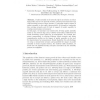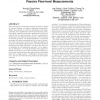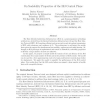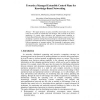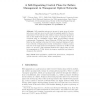TRIDENTCOM
2010
IEEE
14 years 18 days ago
2010
IEEE
Packet assembly at the network edge is one solution to reduce high packet rates in core network switches. Literature discusses this topic controversially because of three reasons: ...
IMC
2010
ACM
14 years 20 days ago
2010
ACM
The reconvergence of routing protocols in response to changes in network topology can impact application performance. While improvements in protocol specification and implementati...
NETWORK
2006
14 years 2 months ago
2006
A reliable control plane plays a crucial role in creating high-level services in the next-generation transport network based on the Generalized Multiprotocol Label Switching (GMPL...
OSN
2008
14 years 2 months ago
2008
Control Plane architectures enhance transport networks with distributed signaling and routing mechanisms which allow dynamic connection control. As a result, layer 1 switching net...
COMCOM
2006
14 years 2 months ago
2006
The Host Identity Indirection Infrastructure (Hi3) is a general-purpose networking architecture, derived from the Internet Indirection Infrastructure (i3) and the Host Identity Pr...
CONEXT
2008
ACM
14 years 4 months ago
2008
ACM
The Locator/Identifier Separation Protocol (LISP) is one of the candidate solutions to address the scalability issues in inter-domain routing. The current proposals for its contro...
DSOM
2006
Springer
14 years 6 months ago
2006
Springer
This paper proposes an open, extensible control plane for a global event service, based on semantically rich messages. This is based on the novel application of control plane separ...
WOWMOM
2005
ACM
14 years 8 months ago
2005
ACM
A dynamically extensible control plane is a key enabling feature of next generation intelligent selfconfiguring networks. This extensibility can be achieved by enabling service de...
AICT
2005
IEEE
14 years 8 months ago
2005
IEEE
This paper defines a new layered architecture for supporting optical burst switching in an optical core network. The architecture takes into account both the control plane as well...
IWSOS
2007
Springer
14 years 9 months ago
2007
Springer
Self-organizing systems are present in many areas of nature and science, and have more recently been increasingly applied to telecommunications. These systems often exhibit common ...
